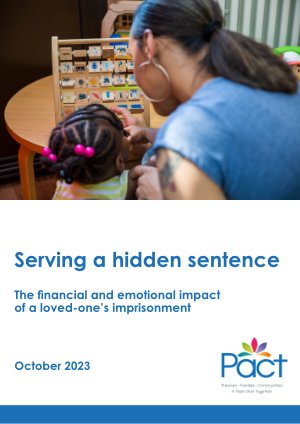By UK Parliament, House of Commons, Justice Committee
This report examines public opinion and understanding of sentencing in England and Wales. We launched our inquiry to explore what the public know about sentencing, how information is accessed and how understanding of sentencing might be improved. As well as examining what the public know about the current approach to sentencing, we also wanted to consider public opinion on sentencing and the extent to which it should inform sentencing policy and practice. As part of this inquiry, we commissioned a public polling exercise. 2,057 adults in England and Wales were asked about their knowledge and views on sentencing. The Committee also worked with Involve, a leading public participation charity, to facilitate a deliberative engagement exercise. 25 adults from England and Wales met over three half-day sessions to discuss the aims of sentencing. The combination of these exercises has provided an invaluable insight into public opinion and understanding of sentencing. In terms of public understanding, both the polling and the public dialogue indicated that a significant portion of the public do not know which bodies are responsible for deciding sentencing policy. Only 22% of respondents to our poll identified that Parliament was responsible for setting the maximum sentence in law for a criminal offence. The participants in the public dialogue indicated that they were unsure which institutions had responsibility for deciding the framework that sentencers apply in individual cases. We are concerned that this can give rise to an accountability gap, whereby the public is unclear as to the Government’s responsibility in relation to sentencing. It is widely recognised that there has been a perceptible hardening of public opinion towards serious crime since the 1990s. Successive governments have increased the maximum sentences for a number of serious offences, often in response to public campaigns arising from individual cases. The polling we commissioned indicated that there is significant public support for increasing the custodial sentences for murder, rape and domestic burglary. For example, 18% of respondents said that the starting point for the most serious rape cases should be a whole life order (the current starting point is 15 years), and 33% said the starting point for the most serious cases of domestic burglary should be a 10-year custodial sentence (the current starting point is three years custody). One of the most striking findings from both the polling and the public dialogue was that one of the most important purposes of sentencing should be to provide justice for the victim. 56% of respondents to our poll ranked “ensuring the victim had secured justice” as one of their top three factors that should influence a sentence. In the public dialogue, there was a consensus that “providing justice for victims” should be a purpose of sentencing, and almost half placed it second in order of priority behind protecting the public. Accordingly, we recommend that the Government should review the statutory purposes of sentencing to consider whether greater emphasis should be placed on achieving justice for the victims of crime and their families. Our overall conclusion is that there is a need for national debate on sentencing. Our inquiry has highlighted that the public debate on sentencing is stuck in a dysfunctional and reactive cycle. There needs to be greater public knowledge and understanding of current sentencing practice, of evidence on the effectiveness of different sentencing options, and the resource implications of sentences in order to improve the quality of public discourse on sentencing. It is incumbent on all policymakers and opinion-shapers to play a role in shaping a more constructive debate and to seek greater consensus on the issues. This Government, and its successors, need to think carefully about how to engage with public opinion on sentencing. There are important choices to be made about how to ascertain public opinion and the extent to which policy should be responsive to public pressure. In our view, the Government should seek to actively engage the public on sentencing policy but should do so in a structured and methodologically rigorous fashion. It should ensure that both traditional polling and deliberative methods are used, and that such exercises occur at regular intervals. Finally, policy proposals on sentencing should be subject to independent evaluation, so that the resourcing implications are evaluated before they are enacted. We recommend that the Government establish an independent advisory panel on sentencing to consider proposed changes to sentencing policy and to provide advice to ministers.
Tenth Report of Session 2022–23 Report, together with formal minutes relating to the report . London: House of Commons, 2023. 71p.





















